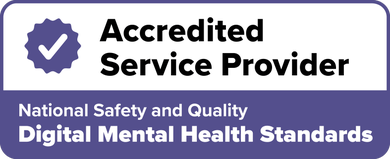Understanding phobias and irrational fears
In a Nutshell
A phobia is a type of anxiety condition involving an intense and often irrational fear of a specific object, situation, or activity.
Phobias can lead to avoidance behaviours, emotional distress, and in some cases, physical symptoms like panic attacks.
With the right support, including therapy and personalised strategies, most phobias can be successfully managed or treated.
Fear is a natural and often protective part of being human. It keeps us alert to danger and helps us respond to threats.
But when fear becomes extreme or persistent and leads to avoidance or distress, it can start to affect your quality of life. In these cases, the fear may be classified as a phobia.
Phobias are often misunderstood. They can seem irrational to others, which may leave someone feeling ashamed, isolated, or unsure of how to seek help. But phobias are among the most treatable mental health concerns.
With the right knowledge, support, and therapeutic approach, most people find they can manage or even overcome them.
What are phobias and irrational fears?
A phobia is an intense, persistent fear of a specific object, activity, or situation. The response goes beyond what would be considered appropriate and often causes distress, disruption, or avoidance.
Even when the individual knows their fear is out of proportion, the emotional and physical reactions can feel overwhelming.
What causes phobias?
Phobias can develop due to a range of influences, often involving a combination of biology, environment, and experience.
Genetics and temperament: Some people are more sensitive to anxiety and stress, making them more vulnerable to developing phobias.
Traumatic experiences: Events such as a dog bite or getting stuck in a lift may result in lasting fear.
Learned behaviour: Fear can be learned through observation, particularly during childhood. For example, if a parent shows strong fear of thunderstorms, a child may adopt the same response.
Brain structure and function: Research suggests that specific areas of the brain, such as the amygdala, play a role in processing fear. In people with phobias, these areas may be more reactive or sensitive, leading to heightened fear responses even when there is no real danger.
Although phobias often begin in childhood, they can also emerge in adulthood, sometimes after a triggering event or period of stress.
Normal fear vs phobia
Everyone experiences fear from time to time. Fear is a natural response to a real or perceived threat and can help keep us safe. The problem is when that fear becomes overwhelming, persistent, or disruptive.
Here are some examples that differentiate normal fear from phobia.
Normal fear | Phobia |
|---|---|
Feeling nervous before a flight or during turbulence | Avoiding all air travel, even if it affects work or family commitments |
Getting uneasy when seeing a large dog off-leash | Refusing to walk through a park in case a dog appears |
Feeling uncomfortable during a blood test | Avoiding medical care entirely due to fear of needles |
Feeling anxious about speaking in front of others | Turning down promotions or social events to avoid speaking |
In each case, normal fear is proportionate to the situation and typically short-lived. A phobia, on the other hand, causes intense anxiety, can last for six months or more, and often leads to significant avoidance or distress.
Signs you might have a phobia
Here are some signs to watch out for:
Intense fear or anxiety triggered by a specific object, situation, or thought
Physical symptoms such as rapid heartbeat, nausea, dizziness, or shortness of breath
A strong urge to escape or avoid the feared situation at all costs
Disruption to everyday activities, relationships, or work due to avoidance
Awareness that the fear is excessive, but still feeling unable to control the response
Panic attacks or heightened anxiety when exposed to the feared object or situation
If these signs sound familiar and have been present for an extended period, it may be time to explore professional support.
Common types of phobias
While phobias can vary widely, most fall into several common categories:
Animal phobias: These include fears of spiders, snakes, dogs, or rodents. In Australia, arachnophobia is especially common.
Natural environment phobias: These involve fear of heights, water, darkness, or storms.
Situational phobias: These include fears related to flying, enclosed spaces, driving, or using lifts.
Blood-injection-injury phobia: This is the fear of medical procedures, needles, or blood.
Social phobia (social anxiety disorder): Fear of being judged, embarrassed, or humiliated in social or performance situations.
Agoraphobia: Fear of being in situations where escape might be difficult, often connected to experiences with panic attacks.
Rare types of phobias
Less common phobias can be just as distressing and disruptive. These are often overlooked or misunderstood.
Emetophobia: Fear of vomiting
Nomophobia: Fear of being without a mobile phone
Arachibutyrophobia: Fear of peanut butter sticking to the roof of the mouth
Chorophobia: Fear of dancing
Xanthophobia: Fear of the colour yellow
Even when these fears sound unusual, the distress they cause is very real. They are valid mental health concerns that deserve attention and support.
How to treat phobias
Phobias respond well to treatment, especially when the approach is personalised and evidence-based. Treatment often involves helping the brain and body re-learn how to respond to the feared situation or object.
Psychological therapies
Exposure therapy: This involves gradually and safely confronting the fear. Over time, repeated exposure helps reduce anxiety and avoidance.
Cognitive behavioural therapy (CBT): A structured approach that helps people examine and change unhelpful thoughts and behaviours.
Virtual reality exposure therapy: In some cases, technology can simulate the feared environment, such as flying or public speaking, in a safe setting.
Relaxation training and breathing techniques: These can help manage the physical symptoms of fear and reduce the likelihood of a panic attack.
Medication
Medication may help in certain situations, especially where anxiety symptoms are severe or interfering with daily life. This can include short-term use of anti-anxiety medication or beta blockers.
Medication is generally used alongside therapy, not as a standalone treatment.
Self-guided strategies
Create a fear ladder: Start with mild exposure to the feared object or situation and build up gradually.
Keep a journal: Noting when anxiety appears can help you identify patterns and triggers.
Challenge negative thoughts: Ask yourself whether the fear is based on fact or habit.
Use calming strategies: Techniques like deep breathing, muscle relaxation, or grounding exercises can help reduce your body's fear response.
Talk about it: Sharing your experiences with a trusted person can reduce shame and open up pathways to support.
When phobias are linked with generalised anxiety or panic disorder, your treatment plan may also address those conditions.
Final thoughts
Phobias can be confusing and exhausting. They can affect how you make decisions, connect with others, or show up in daily life. But change is possible.
When a fear begins to shrink your world, it’s a sign that it deserves attention. Phobias are treatable, and many people make meaningful progress with therapy, education, and support.
Essential Reading
Free Mental Health Tests
Frequently Asked Questions
A phobia is more than feeling afraid. It’s a persistent, excessive fear that causes significant distress or avoidance, often lasting six months or more and affecting your daily life.
Yes. Phobias can lead to panic attacks, especially when the person is exposed to their trigger. Symptoms may include rapid heartbeat, dizziness, sweating, or feeling unable to breathe.
Not necessarily. If a phobia doesn’t interfere with your daily life or cause significant distress, treatment may not be required. However, if it's limiting your activities or causing anxiety, seeking support can be beneficial.
Learned helplessness occurs when someone feels they have no control over repeated negative events. Over time, they may stop trying to cope or escape. In phobias, this can make the fear feel stronger or more permanent, even when help is available.
Recommended Therapists Available Now
QLD
Psychologist
As a psychologist, I value each client as an individual with unique life experiences, skills, and talents. I love helping my clients clarify what makes life rich, full, a...More
NSW
Psychologist
Hello and welcome! I look forward to getting to know you and working with you to achieve your goals for therapy. I am passionate and dedicated to support my clients, ensu...More
QLD
Psychologist
Hello! I am an experienced therapist with expertise to support you in overcoming challenges and reaching your goals and potential. I'd love to work with you or your fam...More








